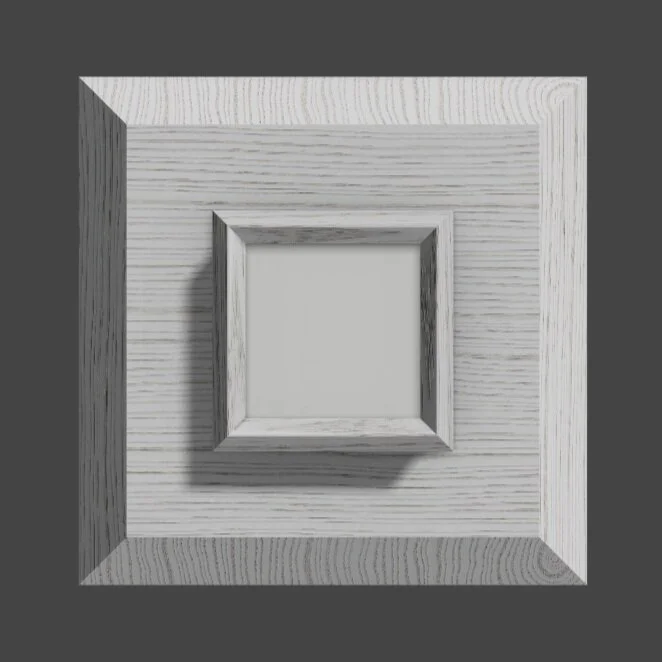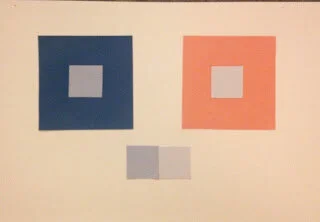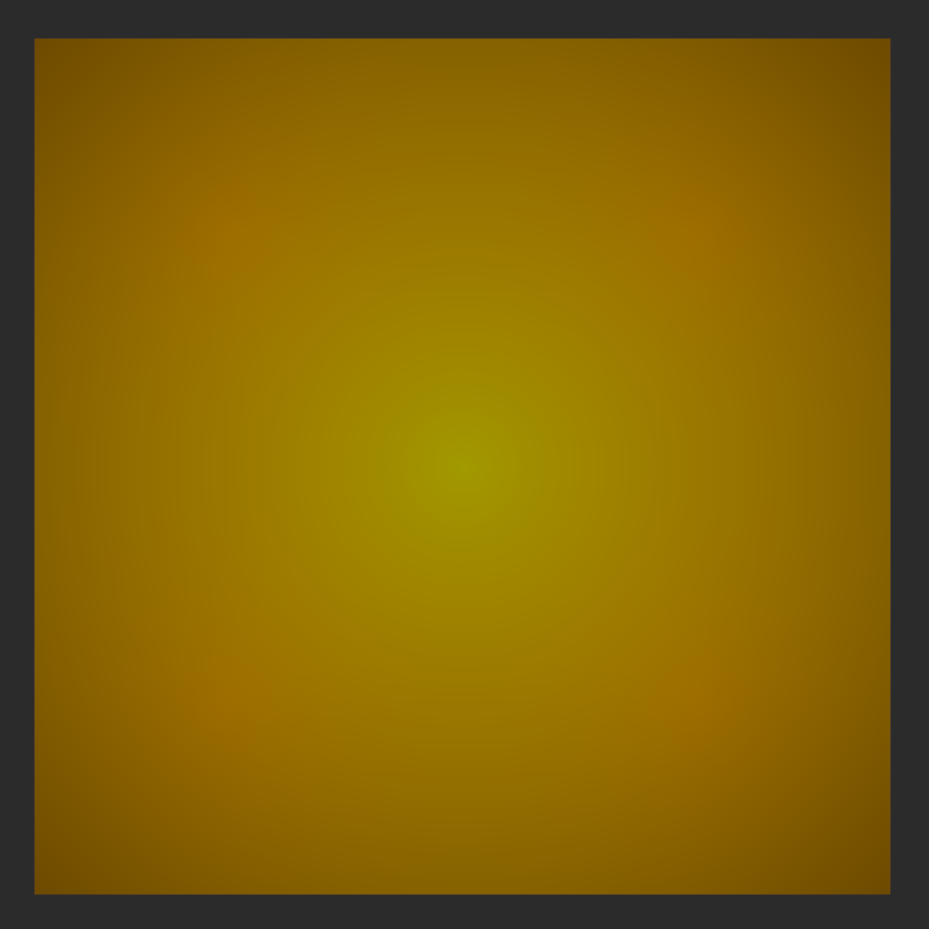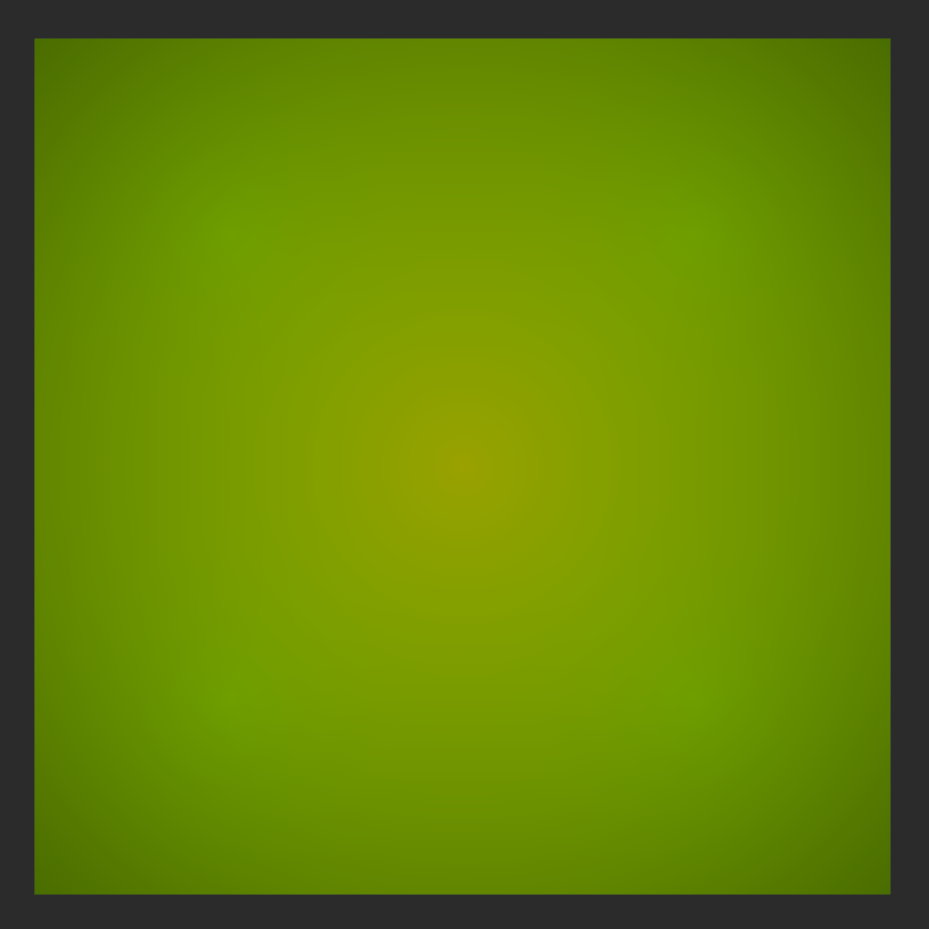Albers Color Interaction Experiments Translated into Light
Controllable multi-colored light hasn’t been around long. However, compared to the history of painting the medium is basically brand new. The study of composition with colors goes back centuries. This quick study translates some of these past insights from painting medium into additive controllable light. In particular, it adapts some of the basic studies of Joseph Albers into additive light.
For this study, I’ll be using one of the pieces from Five Light Poems.
Looking closer, the main visual focal point is the diffuser.
With the diffuser removed, we can see how far back the lights are mounted.
The piece has five lights. The spacing and depth from the diffuser was chosen so that the lights mix softly together, somewhat like liquid, but still have individual influence. They’re on the edge of having a hot spot. Partitioning the fixture into sections would be more directly analogous to Albers studies. However, this experiment is in large part preparation for the Five Light Poems and the larger interactive light paintings that will follow. At present, I’m more interested in soft-edge light blending than hard-edge juxtaposition.
Here are the five lights and the diffuser they sit behind.
This means all of our experiments will be restricted to setting the colors on five lights in these positions:
Study 1: same color, different surroundings
It’s well known that the same color can be perceived very differently based on the colors around it. Here’s an example the first study will translate into soft-edge additive light.
The blue appears more luminous surrounded by black. Against the high-value yellow, it recedes and looks lower valued. Translating this study into light, we’ll keep the middle light blue. The outer lights will change. They’ll first be off (the closest thing to black in light), then will be yellow.
The diffuser catches and mixes the colors.
The blue is transformed by its neighbors to the point it’s essentially white.
.This effect was poetic and metaphoric enough that it become one of the Five Light Poems (“The Constant Blue.”)
Study 2: different colors made to look the same
The classic corresponding study involves making two different colors look the same, as in this example:
(Photo from Miné Ternar Kal’s color course.)
In this soft-edge additive light study, we’ll similarly try to get the center light to be different colors but appear the same. One way to approach this is to let outer greens mix with an inner red into a yellow. Then the colors can be swapped and re-balanced to get the same center hue.
With hard-edge shapes, it’s obvious the colors are nowhere near the same. We can try this with soft-edge light mixing by setting the lights like this:
When looked at through the diffuser looks like this:
In practice, the outer colors are at 80% brightness while the inner color is at 100%. It took some experimentation to get the balances to match.
Below is a slideshow that allows direct comparison while focusing on the same central color. Remember that in the first image the middle light is green. In the second image, the middle light is red.
Of particular note is the complexity of the hues in the areas not directly over the lights. In general, much of the current LED art is highly saturated with primary colors. This makes sense. It’s a fairly new medium, and the bright primaries are the most accessible. The above study leaves me wondering if the mixture of the hues between the lights is a way to incorporate more of the complex hues and even value relations used in painting and other older traditions of subtractive light.



















